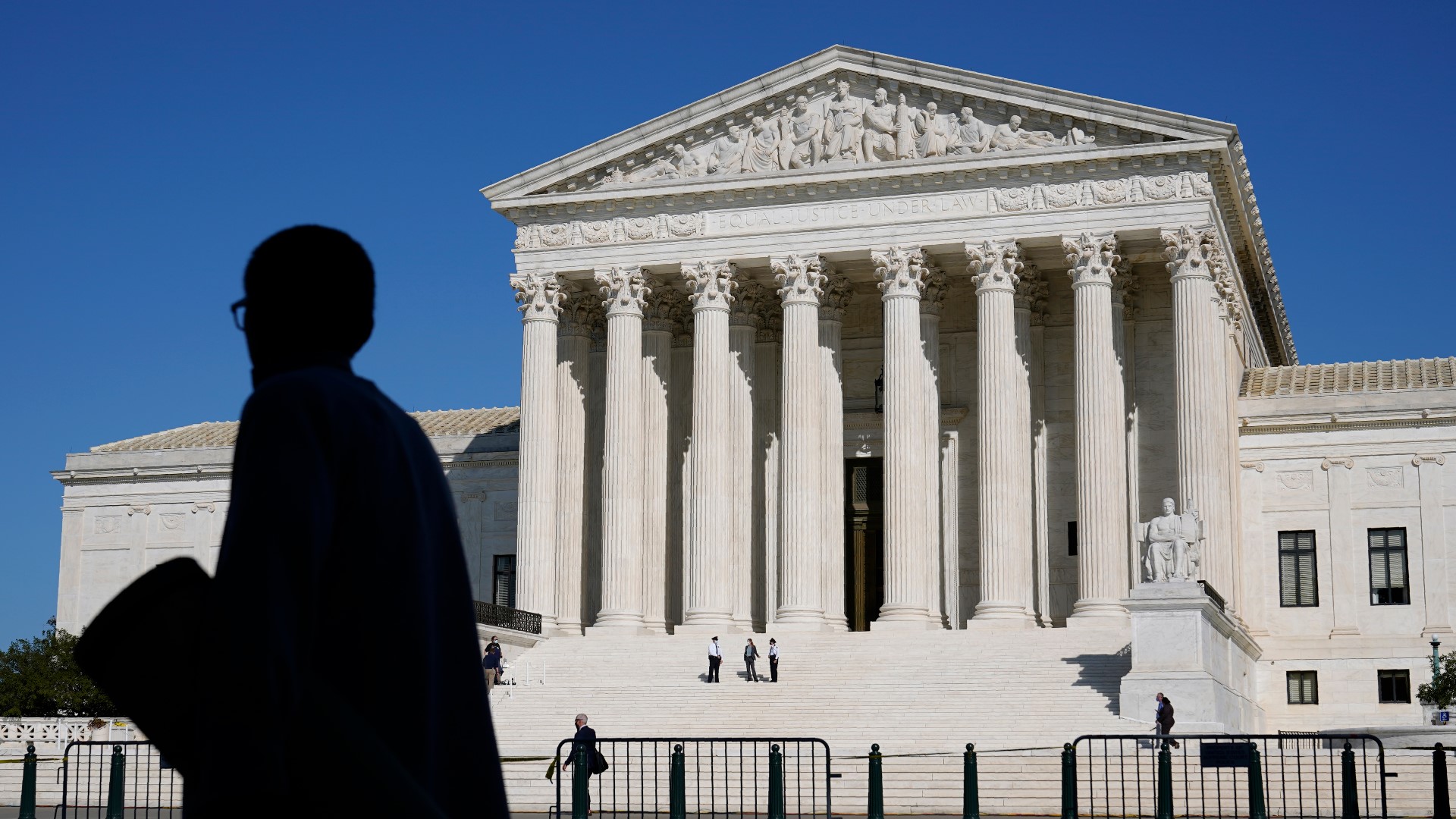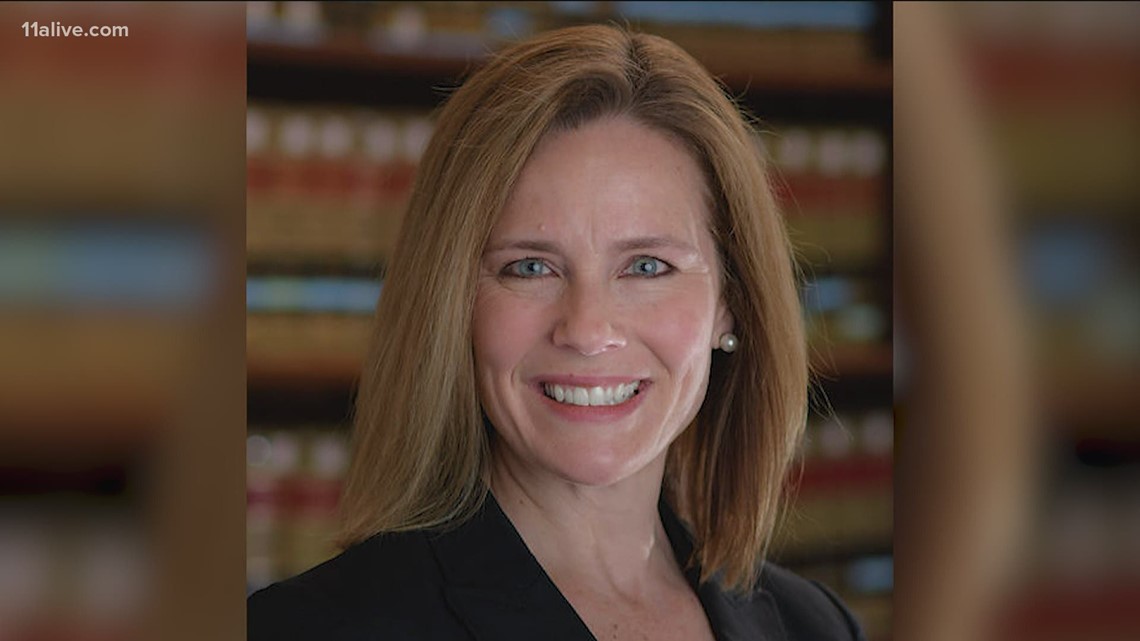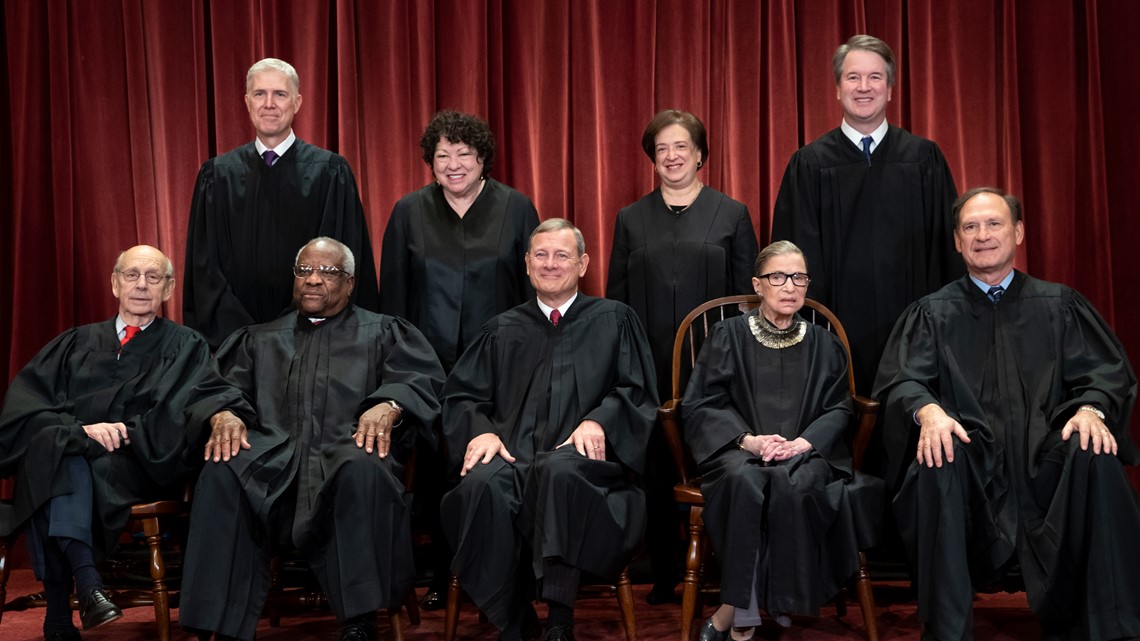How a Supreme Court Justice gets confirmed and what it means for the 2020 election
Following the death of Supreme Court Justice Ruth Bader Ginsburg, many are left wondering how the vacancy will be filled.

As the country mourns the loss of Supreme Court Justice Ruth Bader Ginsburg, politicians on both sides of the aisle have wasted no time in discussing how her seat should be filled.
With the election a little more than a month away, there has been heated debate over whether or not the Senate should wait to vote on a replacement.
Democrats have argued that whoever is elected president in Nov. should make the appointment, but Republicans have made clear they plan to vote in President Donald Trump's pick before the end of his term.
The parties seem to have changed roles from just a short while ago, following the death of Justice Antonin Scalia when Republicans were the ones pumping the brakes and the left tried to push forward with a vote.
However, no matter your affiliation, it is vital to understand the process of appointing a new justice to the Supreme Court and what that means in context.
University of Toledo law professor Lee Strang said that the Supreme Court holds a lot of power and has been a deciding factor in highly debated issues throughout our country's history, including abortion rights and marriage equality.
So, how does someone get appointed to the United States Supreme Court?
How a Supreme Court Justice Gets Confirmed A look at the standard process of filling a vacant seat
The President of the United States is given power by the Constitution to nominate someone to fill a vacant seat on the Supreme Court.
After the nominee is chosen, it is up to the Senate Judiciary Committee to vet the president's pick and hold confirmation hearings.
Once the committee determines the candidate is fit and approves the nomination, it goes to the full Senate for a vote, only requiring a simple majority to be confirmed.
In the case of a tie, the deciding vote goes to the vice president.
Why does only the Senate vote?
Article II Section 2 of the United States Constitution states:
"[The president] shall have power, by and with the advice and consent of the Senate, to make treaties, provided two-thirds of the Senators present concur; and he shall nominate, and by and with the advice and consent of the Senate, shall appoint ambassadors, other public ministers and consuls, judges of the Supreme Court, and all other officers of the United States, whose appointments are not herein otherwise provided for, and which shall be established by law: but the Congress may by law vest the appointment of such inferior officers, as they think proper, in the President alone, in the courts of law, or in the heads of departments."
What this means is that the power of the Senate to vote on the president's nominations for all high-ranking federal officials is written into the Constitution.
Strang explained that it was written this way as the Senate was set to be a small body of individuals with a long-term focus on the good of the nation.
As a reminder, the Senate is made up of two people per state. Appointing the Senate as the sole consenting body is meant to ensure every state in the union has an equal say in who the important officers will be, rather than giving more weight to highly populated states.
Senators serve six-year terms that are staggered and one-third of the Senate's total membership is up for reelection during any given election period.
Who Will President Trump Pick? An official announcement is expected Saturday
President Donald Trump said he will be announcing his pick to fill the vacant seat on Saturday at 5 p.m., already stating numerous times the appointment would go to a woman.
On Friday night, it became clear that his likely choice would be Amy Coney Barrett, a lawyer and jurist currently serving as a circuit judge on the US Court of Appeals for the Seventh Circuit.
Who is Amy Coney Barrett?
Barrett’s history shows she is a strong supporter of the second amendment and while she hasn’t explicitly ruled on any abortion cases, she has cast votes in Indiana cases related to abortion rights.


In 2016, Indiana passed a law that would require fetal remains to be buried or cremated after an abortion. Eventually, the 7th circuit decided this was unconstitutional. But, Barrett voted to re-hear the case. In another example, just last year, she dissented when appeals court judges tried to block an Indiana law that would require parents be notified when a minor tried to get an abortion.
RELATED: VERIFY: Who is Amy Coney Barrett? Breaking down past rulings from the expected Supreme Court nominee
After Trump officially makes his announcement, it heads to the Senate Judiciary Committee, currently led by South Carolina Republican Lindsey Graham.
How Does the Nominee Get Confirmed? A potential timetable for a vote
According to a GOP aide, hearings could start in the committee as early as October 12, with a vote in the full Senate by October 29.
And while that may be cutting it close to the election, the election is not the deadline. The Senate has until the inauguration on Jan. 20 to confirm Trump’s nominee, otherwise, the process starts over again: either moving forward with Trump’s pick or with a new nominee should Biden be elected.
With the election less than a month away, there’s been heated debate between Republicans and Democrats over whether or not a vote at this point would be fair.
No court nominee in US history has been considered so close to a presidential election, and Democrats say whoever wins the presidency this Nov. should name the new justice.
But, Senate Republicans are trying to expedite the process; a bit of a role reversal from the last time a vacancy popped up in an election year.
When Justice Antonin Scalia died in 2016, there were nine months left until the election. With Democratic President Barack Obama at the helm, both parties were singing different tunes, with Republicans stalling and Democrats pushing for a vote. Ultimately, as Republicans held the Senate majority, the vote was delayed, and Trump's nominee, Neil Gorsuch, was confirmed in 2016.


But, despite what precedent may or may not exist, ultimately, Republicans hold the majority in the Senate and there is nothing requiring them to wait until after the Nov. 3 vote.
However, Senators up for reelection are likely facing pressure from constituents to either vote now or hold off. Plus, while Republicans do hold the Senate majority, it is only by a slim margin of 53-45 with two additional independents. If the party loses three votes, the president's nomination would go to Vice President Mike Pence, but should they lose four, the nomination would be denied.
What Makes a Supreme Court Nomination So important? Supreme Court Justices are appointed for life
To get an understanding of why both ends of the political spectrum are worried about the next appointment, it is important to examine who is currently serving on the bench.
John G. Roberts, Jr., Chief Justice of the United States
President George W. Bush nominated him as Chief Justice of the United States, and he took his seat on Sept. 29, 2005.
Clarence Thomas, Associate Justice
President Bush nominated him as an Associate Justice of the Supreme Court and he took his seat on Oct. 23, 1991.
Stephen G. Breyer, Associate Justice
President Clinton nominated him as an Associate Justice of the Supreme Court, and he took his seat on Aug. 3, 1994.
Samuel A. Alito, Jr., Associate Justice
President George W. Bush nominated him as an Associate Justice of the Supreme Court, and he took his seat Jan. 31, 2006.
Sonia Sotomayor, Associate Justice
President Barack Obama nominated her as an Associate Justice of the Supreme Court on May 26, 2009, and she assumed this role Aug. 8, 2009.
Elena Kagan, Associate Justice
In 2009, President Obama nominated her as the Solicitor General of the United States. A year later, the President nominated her as an Associate Justice of the Supreme Court on May 10, 2010. She took her seat on Aug. 7, 2010.
Neil M. Gorsuch, Associate Justice
President Donald J. Trump nominated him as an Associate Justice of the Supreme Court, and he took his seat on April 10, 2017.
Brett M. Kavanaugh, Associate Justice
President Donald J. Trump nominated him as an Associate Justice of the Supreme Court, and he took his seat on Oct. 6, 2018.
While at first glance, it seems like conservatives have the majority, and while technically, true, Strang explained that Chief Justice John Roberts, Jr. tends to be more middle of the road and has often been a swing vote. And, while more right-leaning than Roberts, Strang said Kavanaugh sometimes swings left as well.
So whoever is confirmed, could shift the balance of the court.
Strang also noted that the Supreme Court has consistently been the deciding factor in major and often polarizing issues in this country, including abortion and marriage equality.
Another thing to keep in mind is that these are all life appointments. Whoever is confirmed will play a key role in shaping the course of the country for potentially decades to come.
To make your voice heard, you can reach out to your Senators. In Ohio, they are Rob Portman (R-OH) and Sherrod Brown (D-OH).


